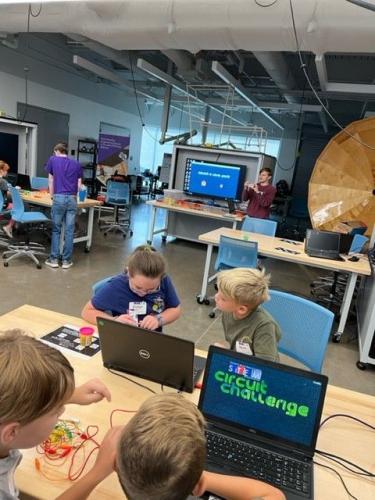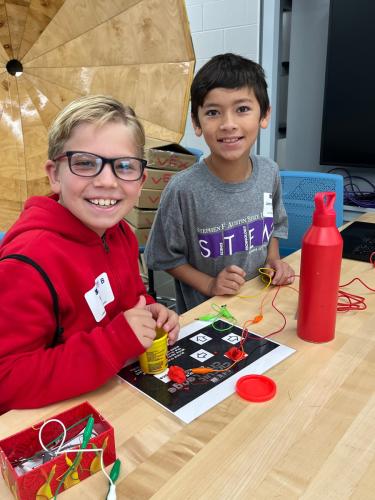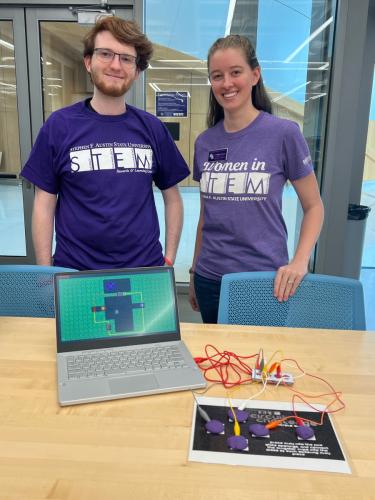NACOGDOCHES, Texas — When innovation, collaboration and exploration collide, Stephen F. Austin State University’s STEM Research and Learning Center students can create new technologies, conduct research and share their love of science, technology, engineering and mathematics in new ways.
During the center’s summer Little STEM Jacks Camp, junior computer science major Michael “Mikey” Hill created an activity designed to give third- through fifth-grade students an interactive way to learn how electricity flows through a circuit.
"I've always been interested in the ways games can interact with education, and getting to explore those concepts through this project has been a blast,” Hill said. “There's nothing quite like seeing how kids' faces light up when they play games and have fun. Incorporating that with topics they can learn is one of the best feelings for me as a game designer."
Hill started with a Makey Makey kit, which is a circuit board that uses alligator clips to connect to common objects with conductivity, such as bananas or Play-Doh. Once the circuit board is connected to a conductive object, students can play a variety of games by touching the conductors, including a game designed by Hill.
His custom game, SFA STEM Circuit Challenge, is simple and encourages collaboration. Along with the game, Hill designed a custom placemat for students to build their circuits.
“The purpose of the activity is to teach students about circuits using two methods,” said Corina Rivera, SFA’s STEM Research and Learning Center outreach coordinator who worked with Hill. “First, the students construct a physical circuit using the Makey Makey kit by placing Play-Doh on the placemat in the shape of arrow keys and complete the circuit using their hands. When students complete the circuit, it gives input to the computer, which responds like the arrow keys on the keyboard.
“The second way the students learn about circuits is through the game app on the computer. The game begins with a robot, which can be steered using the constructed circuit arrow keys located behind a closed door. In order for the door to be opened and to advance to the next level, the robot must push blocks around the room to fit into a digital circuit, enabling the flow of electricity to open the door.”
By reinforcing circuit concepts through physical activity, students learn about the flow of electricity and can independently navigate through the game. Using games as a tool to teach kids about circuits and the way electricity flows makes it a fun, interactive and engaging activity, according to Hill.
The SFA STEM Research and Learning Center plays a vital role in giving university students opportunities to create and teach outside of their classes. It offers a range of programs to help students find new ways to share the love of mathematics and science, engage in research, and connect with others to share strategies and best practices.
To learn more about the center, visit sfasu.edu/stem.

 Axe ’Em, Jacks!
Axe ’Em, Jacks!


